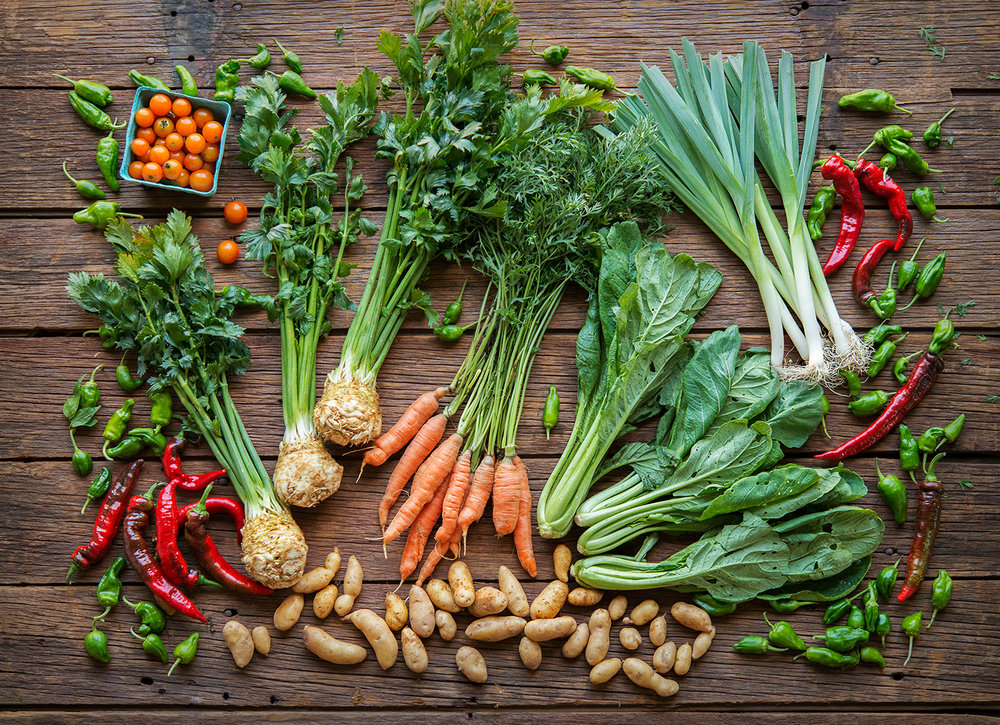Rory Brown, Food Writer, Shares 5 Winter Produce Picks You Should Be Eating Right Now
2020.02.03
Compared to the abundant fresh fruits and vegetables in the spring and fall, winter can feel like a bit of a letdown in the healthy produce department. Instead of reaching for nearly tasteless tomatoes or blueberries flown in from another continent, Food Writer Rory Brown shares five tasty and super healthy fresh winter picks you should try.

1. Turnips
Turnips have a strong earthy flavor and are a great low-carb alternative to potatoes if you are craving something mashed and creamy. Try simply peeling them, cutting into chunks and boiling until soft, then toss in some butter and smush them up with a potato masher or hand mixer. Turnips are full of vitamin C, and the green tops (often packaged separately with the other greens) are packed with folates. Try turnip greens steamed or sauteed in a little olive oil.
2. Grapefruit
If you steer clear of grapefruit because of the overly sour taste, give them another try. Look specifically for Indian River pink grapefruit, which are much sweeter, or sprinkle on a scant quarter to half teaspoon of sugar. The tiny bit of sugar -- small enough that you can experience the individual crystals -- perfectly enhances the flavor of the grapefruit. In addition to serving up lycopene and vitamin C, a 2014 research study found that grapefruit can help stabilize blood sugar and insulin levels.
3. Cabbage
The humble cabbage is an unassuming nutrition powerhouse -- and it's often one of the cheapest veggies in the entire produce department. Cabbage is a great source of dietary fiber and provides a smorgasbord of important micronutrients, including calcium, iron, magnesium, and potassium. Grab a bag of the pre-shredded coleslaw mix and combine with browned ground beef or turkey, some shredded carrots, and a generous splash of hoisin sauce for "egg roll in a bowl," a quick low-carb weeknight meal that perfectly replaces a pasta dinner in your weekly rotation.
4. Pomegranate
Pomegranates can look intimidating, but they are actually easy to eat. The trick is to avoid slicing into them and spilling out the seeds. Cut a cone out of the flower end (the top that looks like a little starburst) and then lightly score the skin along the natural ridges down the sides of the fruit. The fruit will easily break into sections containing the seeds, which are the part you want to eat. You can eat them on their own or use them to top a salad or oatmeal. Pomegranates are a tasty low-calorie treat and one of the best sources of antioxidants in the entire produce aisle.
5. Sweet Potatoes
If potatoes are a favorite winter food for you, try sweet potatoes. These orange root vegetables have more fiber than white or yellow potatoes and provide a hefty dose of beta-carotene to protect your skin and eyes from UV damage. You can use sweet potatoes virtually any way you cook potatoes: mashed, baked, or cut up into fries and cooked in an air fryer or oven for a healthy side dish that feels like a special treat.
Aside from their many nutritional benefits, these winter produce items are often very reasonably priced because they are in season. Most grow well in chilly weather and so can often be found in local farmer's markets all winter long. Choose winter fruits and vegetables for a triple impact -- healthy for the environment, your wallet, and your body!
About Rory Brown (Charleston, SC): After spending the first 40 years of his life in the United States, Rory Brown decided to focus on the quality of life and began living internationally. He now spends his time in Lake Como, Italy, Sydney, Australia, Charleston, South Carolina, and Kauai, Hawaii. His appreciation for simple health food that embraces local traditions of excellence has earned him credit among farm-to-table communities everywhere he goes.
Brown began his career as a technologist and has always focused on healthy lifestyle choices. His well-researched lifestyle writing has increasingly focused on living life to the fullest each day throughout the world.
More Articles
Copyright © Fooyoh.com All rights reserved.